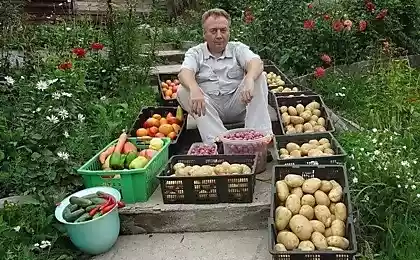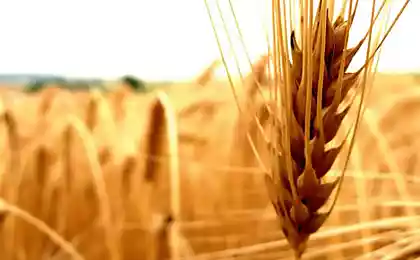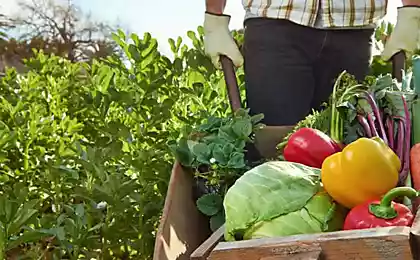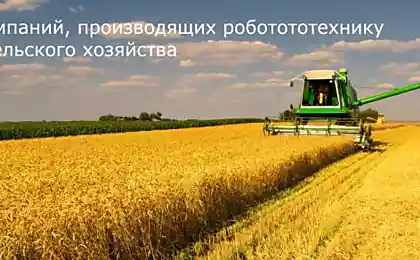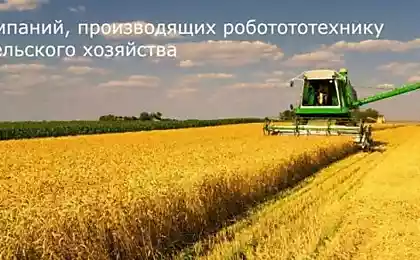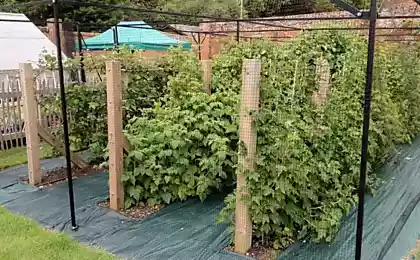554
Expert advice on the cultivation of the miracle of the harvest at their summer cottage
Recently found an article online Igor Liadov, who shared his experience of application of natural farming at their summer cottage. His advice seemed quite interesting and quite practical. In particular, the construction of "vegetable container". So, in honor of the author.
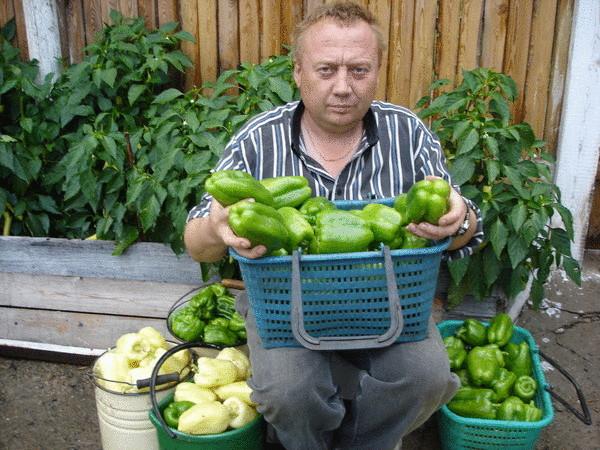
Currently in horticulture, there are several problems:
Soil fertility is falling. The land becomes dense, depleted and has a gray color. Falling fertility leads to the reduction of collected crops. The use of mineral fertilizers and pesticides leads to contamination of soil, water, air and food that leads to diseases of people.Traditional farming techniques used by most gardeners, very laborious. And it reduces interest in gardening among young people.
However, all these problems are quite easily solved if instead of the traditional agriculture applies Natural. Such farming not only preserves, it also restores the fertility of the soil. The result is to increase the yield of horticultural crops. Mineral fertilizers are not applied, which preserves the purity of Nature and preserves the health of man. The number of horticultural operations in the natural farming practices used less often than traditional. And some of it absent. All this reduces the complexity of cultivation and care of plants.
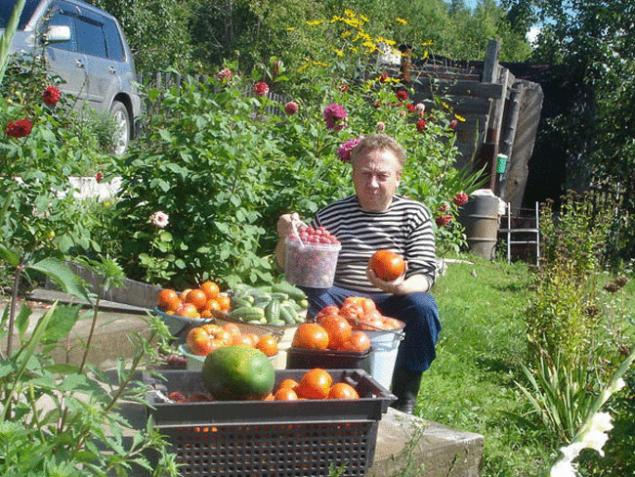
In my opinion, it is more important to get back to nature and forget the postulate, though the soil need to stuff fertilizers, to torment with shovels and sprinkled with pesticides. Natural farming is, first and foremost, careful handling of the soil, protecting it from temperature changes, return nutrients to the land generously given to the plants.
Every year in the spring, arriving at your plot, we sow or plant the vegetables in their beds. Size beds with a width from 1.4 metres to 2 metres, the paths between them from 20 cm to 40 cm maximum. This is called the traditional way of planting vegetables in the garden. The plant in these beds, especially in the middle, often sick, are exposed to decay, this is poorly developed, the vegetables are small, don't last very long. But for pests weakened the plant and good food, and next to it you can defer the offspring. Weed, to handle such beds one torment.
But this is the garden I saw one positive side. Extreme plant, relative to those in the middle, looked more worthy. Larger, not subject to disease and they are easy to weed, prorogate etc.
As I pondered more on one factor. Single tree through the alleys in the city, no one feeds, the leaves of which it skidyvat and then try to clean for appearance and beauty. Although this foliage could serve as a feeding tree. So due to that this tree exists and where it is taking the food? In recent years scientists have found that plant about 60% take food out of thin air. It's certainly interesting.
I strengthened the view that organics may disclose all the features of the plants, saving time and effort. Just for good compost you can see and appreciate the quality of the Western and domestic brands as most of them are created for organic soils. Sure: organics, we can not escape. Works: to learn to compost and to arrange the fixed beds – one times for many years. For this I have amassed boxes. Nature herself suggested it to me. In the spring, many plots flood, water does not have time to go, aisles and standing water. Therefore, raising the beds in 15-25 cm above the track solves this problem. The width of the ridge 60 -100 cm, the length is arbitrary. The gap between the beds 60 -80 see It just seems that the earth in the aisles walking. It is the passages and work, and how!
Vegetable container is a high bed, the walls of which are built of brick, logs, timber, boards, stone, slate ... the Beds stretch from the North to the South. The passages between them can be mulch, sand, sawdust, roofing material, etc., I prefer the lawn once a month strig trimmer. Some passages I was filled with sawdust. The beauty of the garden leaves no one indifferent. Weed no, the site is clean and beautiful.
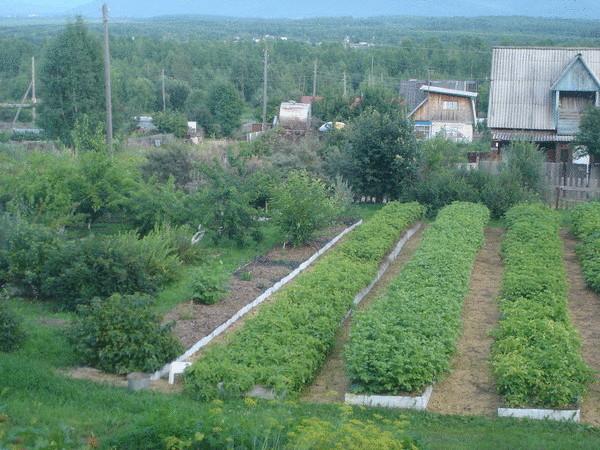
Box – the box is filled with organic matter. Put down plant residues (grass, straw, foliage), then compost or manure, or spilled herbal extracts and the like; the upper layer is placed on the ground with passes. Thus, it populates the box.
Each ridge is 2 rows of vegetables planted along the edges staggered between vegetables. In this geometry there is a vast reserve of productivity, it has long been observed: the plant will grow almost twice as good those in the middle – they have more light and space for growth. And here – all plants are extreme. Wide aisle and need in order to give them the light and open space. A small area of organics gives more than a large area of soil. Those who have at least one season job on the narrow ridges, convinced of the enormous potential of this method and simply cannot return to traditional technology. Working in the furrows, a person experiences joy not only from a good harvest, but also from the process of growing vegetables.
In two rows in a staggered order I soot cabbage, eggplant, peppers, tomatoes, etc.
In four or in three rows I planted onions, garlic, beets, lettuces, radishes, carrots, etc.

Disadvantages
Requires material costs in the first year to build the beds. This tiny flaw makes the container available to most gardeners.
Advantages
· This patch works for several years, we can say forever (you can fill it with waste, plant remains, leaves, etc.). After digging, sow a green manure. When planting is not necessary in the hole to make a compost or rotted manure. This garden bed is a compost.
· Humus is not washed out, as the garden is fenced.
· In the opinion of many agronomists of 60 – 80 % of the plant receive nutrition from the air, so large passages play a significant role in biological process plants. Culture receives good illumination and sufficient air flow.
· About 30% of the plant receives nourishment from the earth. Of course that narrow bed of consumption of organic and mineral fertilizers consumed in 2 times less, compared to standard beds. The crop is much higher than you will get with the narrow beds. I tested this for a few years.
· Contains a large amount of nutrients, water storage
· Convenient watering.
There is no water stagnation
Doesn't require hilling,
Does not require weeding if the garden bed with mulch
Requires no digging, just hoeing 7 out of 10
You can make early planting, because the beds warms up faster in the spring than normal
In narrow garden beds is easy to do the rotation. Where last year they planted onions this year can plant carrots or cabbage. The beds are all the same width.
Yields increased by 100% and above.
Tubers, roots clean with no visible signs of disease
Beautiful and easy to use.
Takes up minimal space, does not create mud and mess.
· Very soft plastic cover arcs, which are sold in seed stores. Put 2 pegs on both sides of the beds and put them on the arc. Distance between arcs of about one meter. Depending on the length of the patch, you set the desired number of arcs. On top of arcs it is possible to use a covering material or film until the threat of frost passes.
Here is the system of narrow beds and allows me to obtain constantly high yields, independent of the vagaries of the weather and conditions of the site itself.
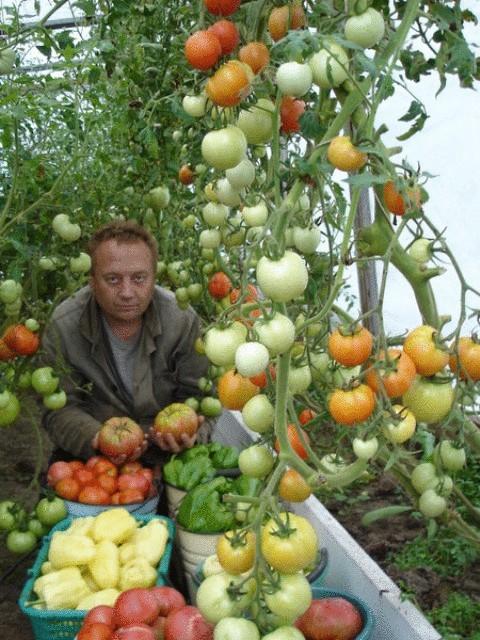
Source: /users/4
